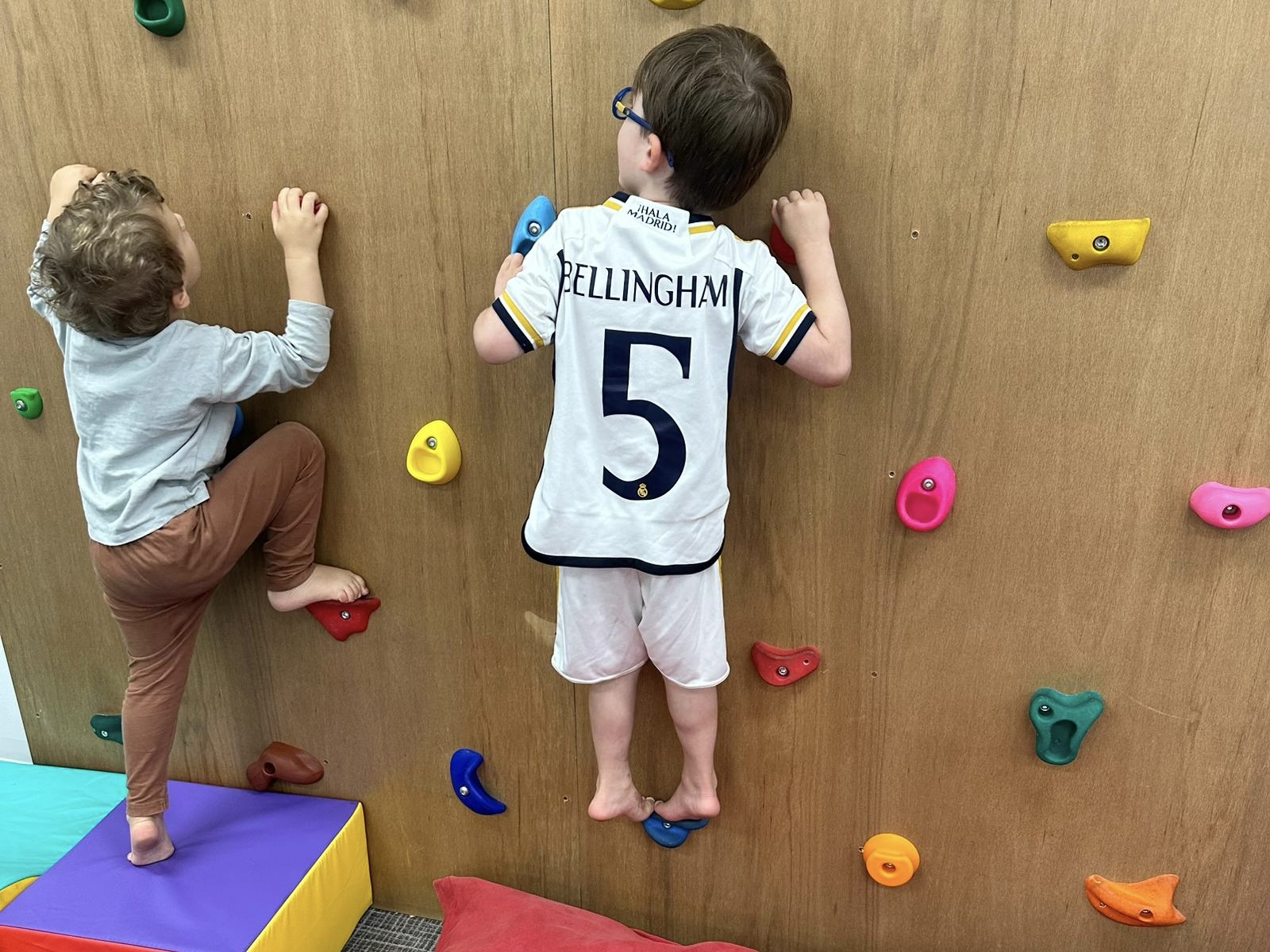
The Importance of Movement and Physical Activity for Children with ADHD
Children with ADHD often face challenges related to attention, impulsivity, and hyperactivity. For many parents, supporting their child’s needs can feel overwhelming. However, one highly effective way to help children with ADHD is through movement and physical activity. At OneOnOne Children’s Therapy in Bondi Junction and Mascot, our Occupational Therapists use movement-based therapies to manage ADHD symptoms. Let’s explore why movement is so crucial for children with ADHD and how it benefits their development.
How Movement Benefits Children with ADHD
Movement and physical activity play an essential role in supporting children with ADHD. Active movement helps them release excess energy, improve concentration, and regulate emotions. Children with ADHD often struggle to sit still for extended periods, and incorporating regular physical activity into their day can help them stay focused and calm.
In Occupational Therapy, we use exercises like running, jumping, and climbing to improve coordination, balance, and body awareness. These activities not only strengthen muscles but also help children with ADHD to manage their movements more effectively, which can lead to better focus in school and other environments.
Key Benefits of Movement for Children with ADHD
Here’s how movement and physical activity can positively impact children with ADHD:
- Enhanced Focus and Attention: Physical activity increases blood flow to the brain, which improves concentration and attention. Many children focus better on tasks after a short burst of physical activity.
- Better Emotional Regulation: Movement helps children with ADHD manage their emotions, reducing anxiety and frustration. Physical activity acts as an outlet for stress, helping them stay calm.
- Boosted Confidence: As children improve their physical abilities, they often feel more confident. This increase in self-esteem can lead to improved social interactions and behaviour.
- Reduced Hyperactivity: Movement gives children with ADHD a healthy way to release their pent-up energy, reducing feelings of restlessness.
- Improved Sleep: Regular physical activity can improve sleep quality, which is often a challenge for children with ADHD. Better sleep leads to better focus and behaviour during the day.
How Occupational Therapy Incorporates Movement
At our Bondi Junction and Mascot clinics, Occupational Therapists use a variety of movement-based therapies to help children manage their ADHD symptoms. Here are some activities we use to support physical development and focus:
- Obstacle Courses: These exercises challenge children to use balance, coordination, and motor planning while following instructions. They make learning fun and engaging.
- Yoga and Stretching: These activities help children with ADHD regulate their body movements and breathing. Yoga helps them develop both focus and relaxation skills.
- Jumping and Climbing: These activities help children release excess energy while improving their gross motor skills, strength, and balance.
- Sensory Play: Swinging, bouncing, or using therapy balls during Occupational Therapy sessions helps children regulate their sensory input, making it easier for them to focus and behave appropriately.
Encouraging Movement at Home
Parents can support their child’s development by encouraging movement and physical activity at home. Here are some simple ideas to incorporate into your daily routine:
- Movement Breaks: Encourage regular movement breaks during homework or chores. Short bursts of physical activity, such as stretching or jumping, can help children release energy and refocus.
- Outdoor Play: Allow your child time to play outside, whether it’s running, riding a bike, or climbing at the playground. Outdoor activities provide great physical and mental benefits.
- Sports: Enrol your child in structured sports like football, swimming, or gymnastics. These activities promote discipline, coordination, and social interaction while helping to channel energy in a positive way.
- Family Activities: Incorporate movement into family time with activities like going for a walk, playing tag, or having a dance-off in the living room. This promotes physical activity while strengthening family bonds.
Occupational Therapy for ADHD in Bondi Junction and Mascot
If your child has ADHD, Occupational Therapy can provide effective, movement-based therapies to support their specific needs. At OneOnOne Children’s Therapy, our experienced therapists in Bondi Junction and Mascot design personalised therapy plans to help children with ADHD improve focus, motor skills, and behaviour through engaging physical activities. Our OT’s are proud members of AHPRA.
Contact OneOnOne Children’s Therapy for Support
If you’d like to learn more about how Occupational Therapy can help your child manage ADHD, we’re here to support you. Contact OneOnOne Children’s Therapy at our Bondi Junction or Mascot clinics to book a consultation. Let us help your child reach their full potential through personalised, movement-based therapies.
Call us on (02) 8065 7837 or email us to schedule an appointment.
We are a dedicated team of Occupational Therapists, Speech Pathologists, and Psychologists, offering expert care for children with ADHD and other developmental challenges in Bondi Junction and Mascot.
